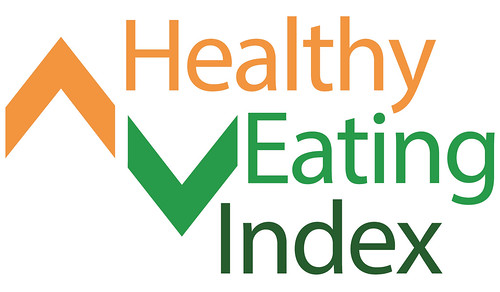
This post is part of the Science Tuesday feature series on the USDA blog. Check back each week as we showcase stories and news from the USDA’s rich science and research portfolio.
Have you ever heard of the Healthy Eating Index? The Healthy Eating Index (HEI) measures the quality of Americans' food choices. At USDA we use the HEI to see how closely Americans are following the Dietary Guidelines for Americans and MyPlate. The HEI assigns scores to diets on a scale in which the maximum score of 100 indicates that the diet meets all Dietary Guidelines recommendations. The HEI shows us that the diets of most Americans could use some improvement. For example, HEI scores for 2007-08 averaged about 53.5 points out of 100 points, and these scores have not changed substantially since 2001-02. Using the HEI we can also compare how food choices and overall diet quality differ among males and females and in certain age groups, such as HEI scores for children and adolescents.
The HEI includes 12 components, each of which measures one aspect of dietary quality. These components represent all of the key Dietary Guidelines food choice recommendations. Nine of the components focus on the types of foods that Americans should eat more of, such as fruits, vegetables, dairy, and whole grains. Three components focus on foods or nutrients that are over consumed and Americans should eat less of, including refined grains, sodium, and calories from solid fats and added sugars (empty calories).
New components to the HEI in 2010 focus on key recommendations from the 2010 Dietary Guidelines and include:
- Consumption of dark-green vegetables and beans and peas (also known as legumes). These are the two vegetable subgroups for which intakes are furthest from recommended levels.
- Consumption of fish and seafood as well as plant proteins. Both are under-consumed choices from the Protein Foods group.
- Ratio of unsaturated to saturated fats in the diet. This reflects the recommendation to replace saturated fats (solid fats) with mono- and polyunsaturated fatty acids (oils).
- Consumption of refined grains to identify higher than recommended intakes of refined grains, such as white bread, white rice, and most cakes, cookies, and other sweet baked products. This component is included because the 2010 Dietary Guidelines emphasize that consumption of refined grains is too high and that about half of them should be replaced with whole grains.
In other applications, the HEI is used by researchers and policy makers in targeting nutrition education and nutrition promotion activities as well as determining the effectiveness of nutrition intervention programs that target specific subpopulations (i.e. low-income). The HEI is also useful in examining relationships between diet and health-related outcomes, between diet cost and diet quality, and to assess the quality of food assistance packages, menus, and the US food supply.
For information on healthful eating and improving HEI scores, visit www.ChooseMyPlate.gov.

